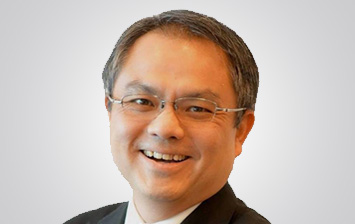
Assuring public safety in cities and countries hard work. There must be enough boots on the ground to patrol the streets, put out fires and activate emergency response teams.
Often, there are just insufficient policemen, firefighters and other public safety manpower to do this. These professions do not attract many job seekers.
Technology can mitigate this challenge. For one thing, technology can “work” 24-hours seven-day-a-week and it does not require a day off. It does not mean putting robocops to assist people in trouble or patrol the streets, although eventually this may become reality. But this is a discussion for another day.
According to former policeman and security consultant Koh Hong-Eng, technology’s strongest suit is that it can connect public security agencies including police, civil defence and even hospitals into one network, resulting in improved communications and stronger collaboration. The network together with special software can process the information in the background speedily.
Currently, the concept of a central network has not been deployed in many countries including Singapore. They have legacy ICT systems where there are separate networks used by the police, civil defence and other related organisations. Consequently, information sharing is slower.
Koh, who is Huawei’s chief public safety expert, said data and information collected in these systems are also siloed, to the detriment of public security because the information cannot be aggregated and crunched for improved insights that can help prevent crimes and terrorist attacks or give early warning of major incidents like floods.
A public security system would include a communications and broadband network to transport video, images and voice quickly and easily, a cloud system to provide data storage, distribution and computation, sensors, closed circuit TV cameras (CCTVs) and other accessories for surveillance and monitoring.
Pulled together, they would provide speed in gathering information which is key to solving public safety issues be it a crime or a flood. Many cities for example are installing sensors along canals and drains to measure water levels and provide flood alerts. They are also installing CCTVs along roads, parks and in public spaces to monitor among other things traffic and people congestion.
Koh pointed out that previously surveillance was used in police forensics. Currently, surveillance is used as a deterrent in crime prevention. Special facial recognition software integrated with the CCTVs can also help identify and track the bad guys as well as road rage incidents.
At the recent Huawei Connect 2017 event in Shanghai, the Chinese telecom company demonstrated its system where surveillance images can be re-wound to track the movement of the bad guys. If the police for example, already have criminals in the database, the surveillance system would be able to match them to the faces they are monitoring in real time.
“Technology is disrupting public security. At the back-end, the work of officers reviewing and verifying information have been largely taken over by the machines. In time to come, the number of public safety command centres will be reduced. This releases more officers to the field where they are needed most.”
Huawei’s public safety platform is based on its cloud technology where it stores, shares and processes data quickly. This solution includes an enterprise LTE (eLTE) system which is a private mobile network to link up the various public safety agencies. This network is linked to sensors, CCTVs and other equipment.
Koh said that with eLTE system, the police officers for example would only need to carry a smartphone instead of digital cameras, tablets and other devices to capture information and send information.
“We provide the hardware and technology platform and we work with hundreds of software vendors to provide different public safety applications,” he said.






